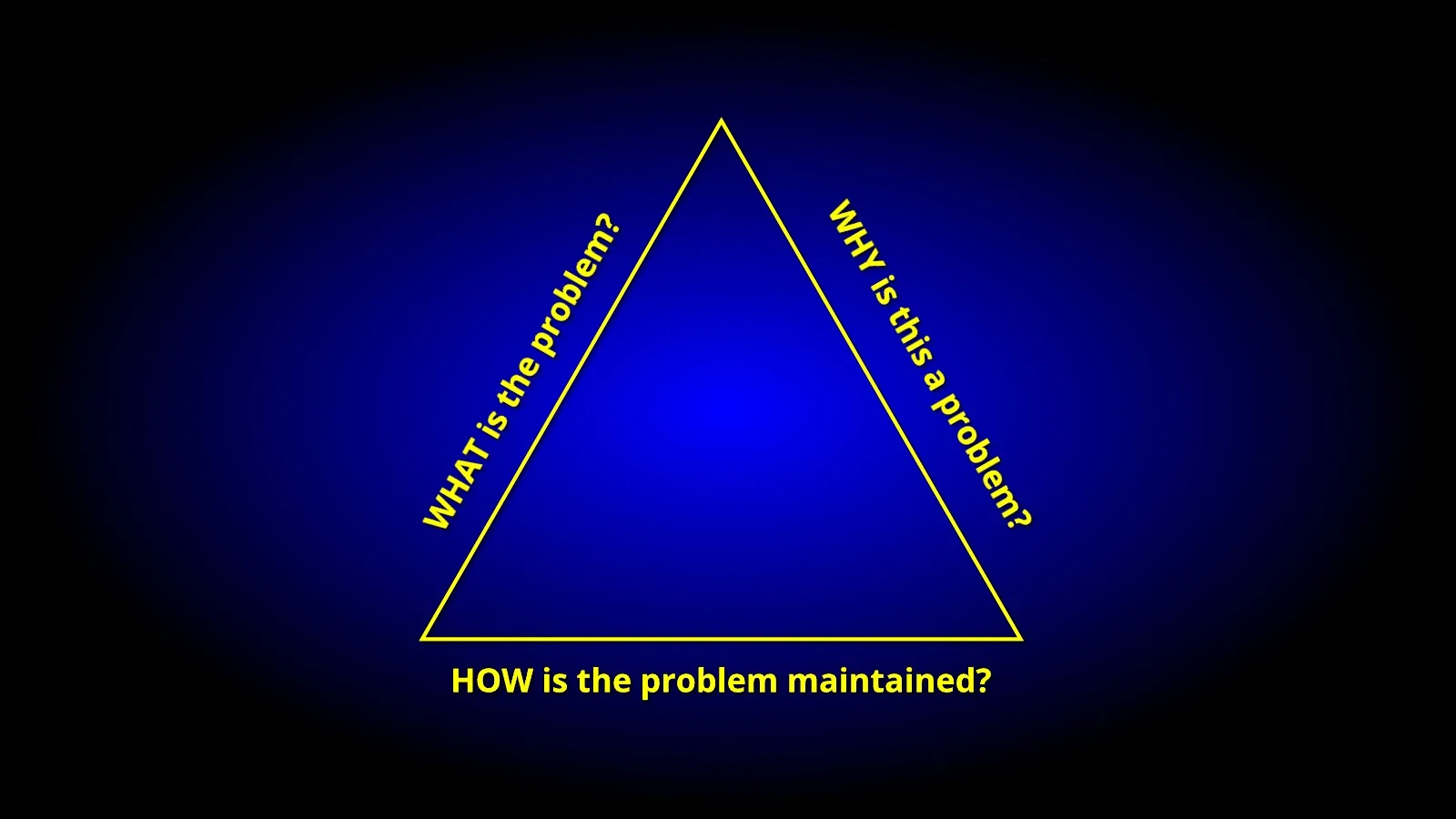Contrary to popular belief, a ‘meme’ is not an internet picture with words on it. A meme is just a belief that has been passed from one person to another. We get most of our core memes from our families of origin.
If your memes (inherited beliefs) are leading to consequences you want, then nothing needs to be changed. If, however, you have memes that are leading to consequences you don’t want, you have a choice. You can change them to something more conducive to positive consequences.
The first step in changing a meme is to examine the components of the meme. There are three basic components to a meme: What, Why and How. The explanation of these components is as follows:
- What is the problem? The ‘What’ component is usually the meme that is causing the problem.
- Why is this a problem? The ‘Why’ component of the meme indicates why the meme is leading to consequences you don’t want.
- How is the problem maintained? Sometimes the attempted solution to a problem only serves to make the problem worse.
If I believe my spouse must be responsible for my happiness, but my spouse has grown tired of being responsible for my happiness, I might try to solve the problem by insisting even more that my spouse be responsible for my happiness. I might even resort to blaming, shaming, and guilt-tripping my spouse in an attempt to get her to resume responsibility for my happiness. But the more I try to force her into taking that responsibility, the more tired she gets of being responsible for it. My attempted solution to the problem is only serving to make the problem worse. It’s been said that, “Insanity is doing the same thing in the same way and expecting different results.” If what you’re doing to solve the problem isn’t working, then doing more of it isn’t going to work either.
The first step in changing a non-productive meme into a productive meme that generates positive consequences is to identify the components of the meme using the outline above.
Once you’ve identified the components of the meme, picture them as legs or sides of a triangle. Triangles have three sides. All three of those sides are connected to each other. If you take away one of the sides of a triangle, it is no longer a triangle. Furthermore, since all the sides of a triangle are connected to each other, if you change one side, the other two sides must change as well.
Memes have a similar construction. Looking at the What, Why and How components of a meme, we can see that if one side is changed, all of the other sides are changed as well. Furthermore, since all three components are necessary in order for a meme to exist, if one component is taken away, the meme ceases to exist.
Since there are three sides to a triangle, and three components to a meme, a triangle can be constructed with one component of the meme on each side. One side of the triangle would be the ‘What’ component, another side would be the ‘Why’ component, and the base of the triangle would be the ‘How’ component.
Once a meme is graphed out in this fashion, then taking away one of the sides means that it is no longer a triangle. So if one of the components is altered or removed, it eliminates the meme altogether or completely changes it.
Changing one of the sides changes the two remaining sides, and therefore the meme is changed as well. So if you have a meme that is leading you to consequences you do not want, and you graph that meme out on a triangle, you have three separate chances to change the meme. You may change the ‘What’ component, or the ‘Why’ component, or the ‘How’ component. By changing any one of these components, the other components change as well, and the meme is altered. When the meme is altered, the consequences of acting on the meme are altered as well.
This may sound confusing at first, but over the coming weeks we’ll go over it in more detail. With more practice it will start to make more sense.

